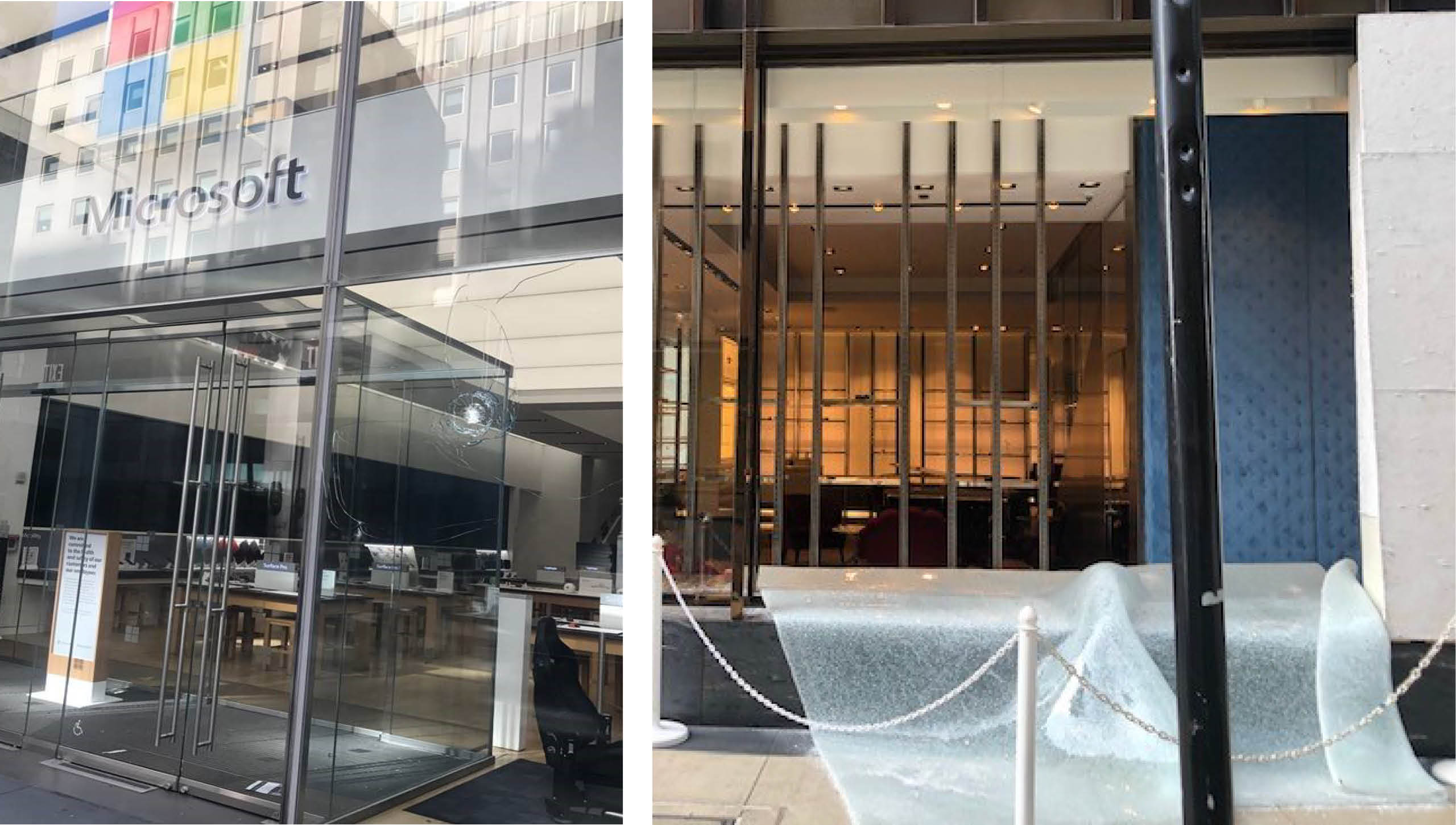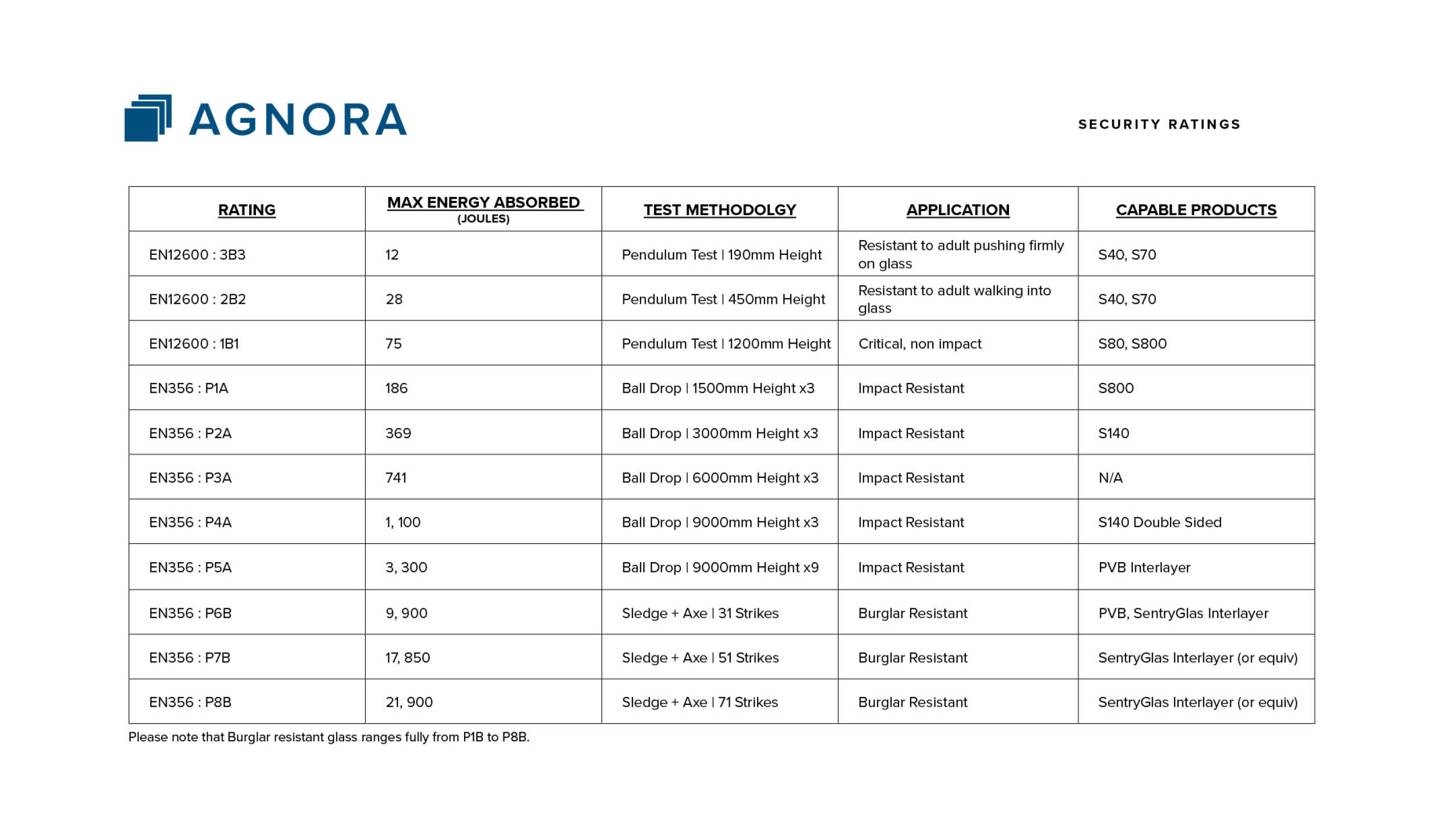
April 19, 2024
In the architectural world, building safety is paramount. Ensuring that a structure can withstand the rigours of everyday life and unexpected incidents is a challenging but necessary endeavour for every design professional. The materials we choose, from the foundation to the facade, play a crucial role in the safety and longevity of a building. Among these, glass stands out as a versatile material that allows light and openness into spaces but is often a vulnerable point for safety.
This is where EN356 and impact-rated glass become critical components in the arsenal of architects and enclosure consultants. When correctly specified and used, impact resistant glass can transform a building’s vulnerability into a showcase of resilience, protecting occupants and property from a variety of threats. In this comprehensive guide, we will explore the vital aspects of EN356/SecureGlaze™ and impact rated glass, and how it can enhance the performance and safety of building designs.
Introduction to EN356 and Impact Rated Glass
EN356 is a European standard for the classification of resistance of glass to manual attack. This standard defines various categories of impact resistance, with the highest levels providing protection against severe force. Impact rated glass, compliant with EN356, has undergone rigorous testing to ensure it can withstand impacts without opening. It is an essential consideration for architects and enclosure consultants when designing structures that require enhanced security features.
For these professionals, understanding EN356 and sourcing the right impact rated glass is not just about meeting regulations—it’s about instilling confidence in the safety and longevity of their designs. Unlike other standards, EN356 is a repeatable test and accreditation procedure that provides an exact force rating of the glass.
Relevance of EN356 and SecureGlaze™ for Architects and Enclosure Consultants
A building’s facade is more than just its external aesthetic—it speaks to the structure’s integrity. For architects and enclosures consultants, selecting the appropriate glazing is critical. The EN356 standard provides a benchmark for qualifying the robustness of glass systems, guiding the industry on the level of security and protection they offer.
Whether designing public buildings, commercial spaces, or residential complexes, building professionals need to consider the risk factors that might necessitate the use of impact rated glass. Factors such as the building’s location, function, and surrounding environments heavily influence the safety measures required, and EN356 helps in defining these needs with clarity.
By highlighting the importance of EN356 in glass selection, this article aims to educate architects and enclosures consultants on the nuanced decisions they must make concerning building safety and the standards that should shape their design strategies.
Understanding EN356 Testing Standards
To select and specify the right impact rated glass, it is crucial to understand the testing standards set by EN356. The process involves subjecting glass samples to a variety of repeatable point load tests (ball drop or similar). There are several classifications of impact resistance under EN356, with the strictest standards being assigned to glass that can withstand the harshest impacts, known as P8B
For architects and enclosures consultants, this means familiarizing the different classifications and what they signify. It also means partnering with specialized glazing suppliers who have experience in providing EN356-compliant glass that meets or exceeds the specified resistance levels.
EN356 and SecureGlaze™ Impact Rated Glass Standards
The following chart signifies the different impact ratings and associated impact energy and applications for each rating:
Key Takeaways and Looking Forward
EN356 and impact rated glass are indispensable components in the quest for safer, more secure buildings. Architects and enclosures consultants must prioritize understanding these standards and employing the best impact resistant solutions to protect their designs and the people who use them.
The implementation of impact rated glass presents a tremendous opportunity to elevate not only the safety but also the overall performance and experience of the built environment. By staying informed, collaborating with experts, and selecting the right materials, design professionals can make a lasting impact in safeguarding their architectural creations. Ask the glass fabrication experts at AGNORA which solution may be best for you!

